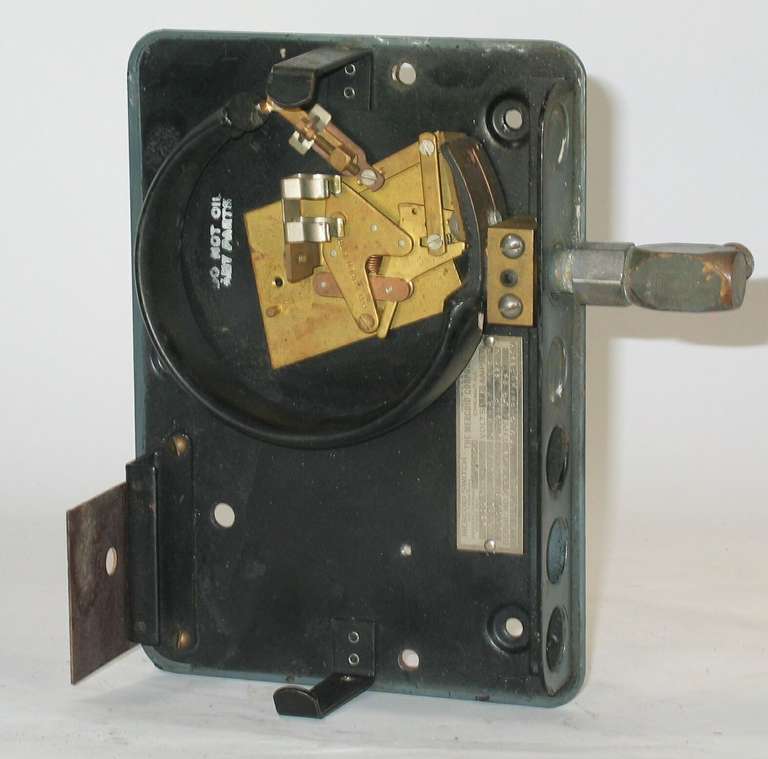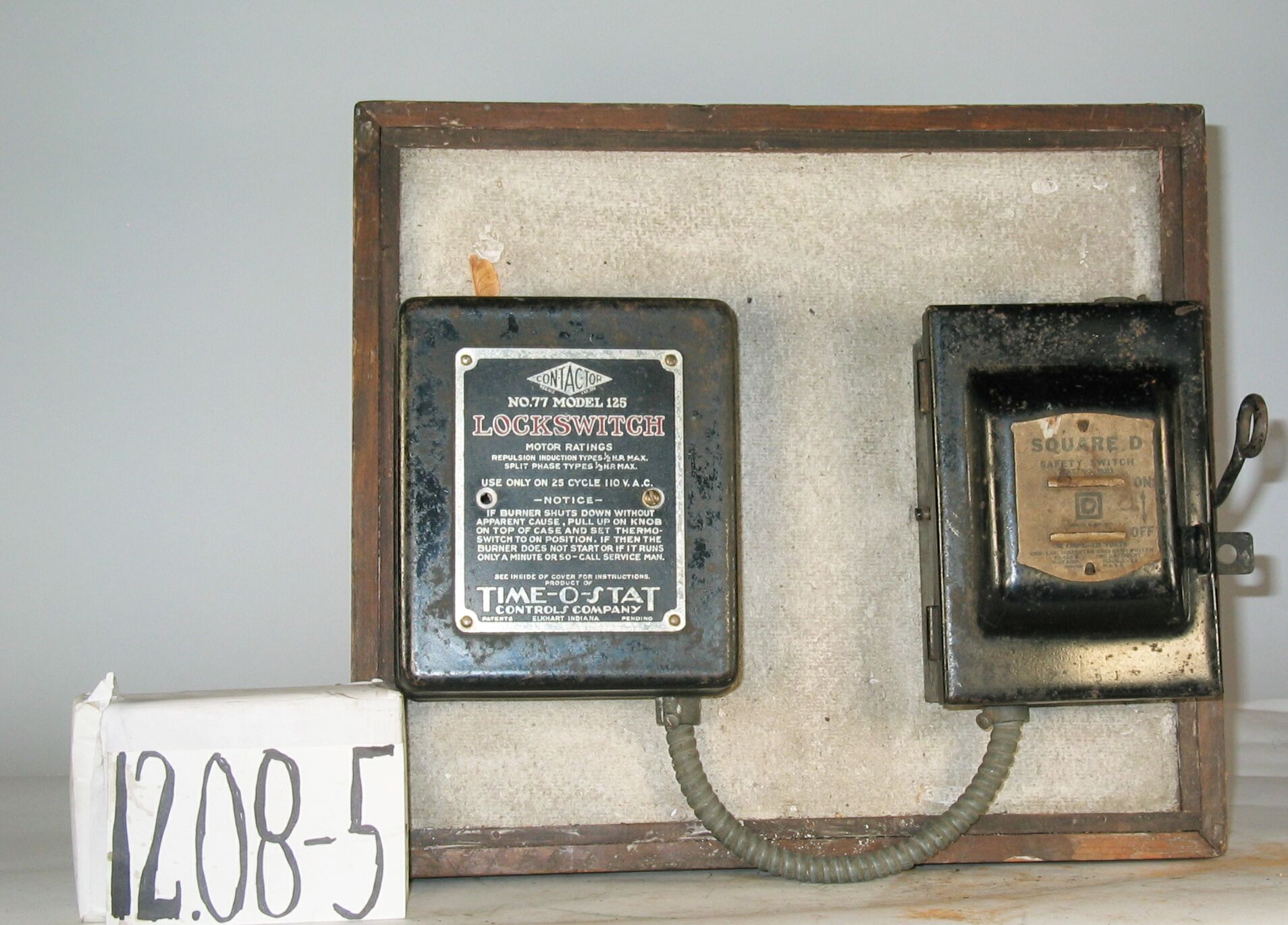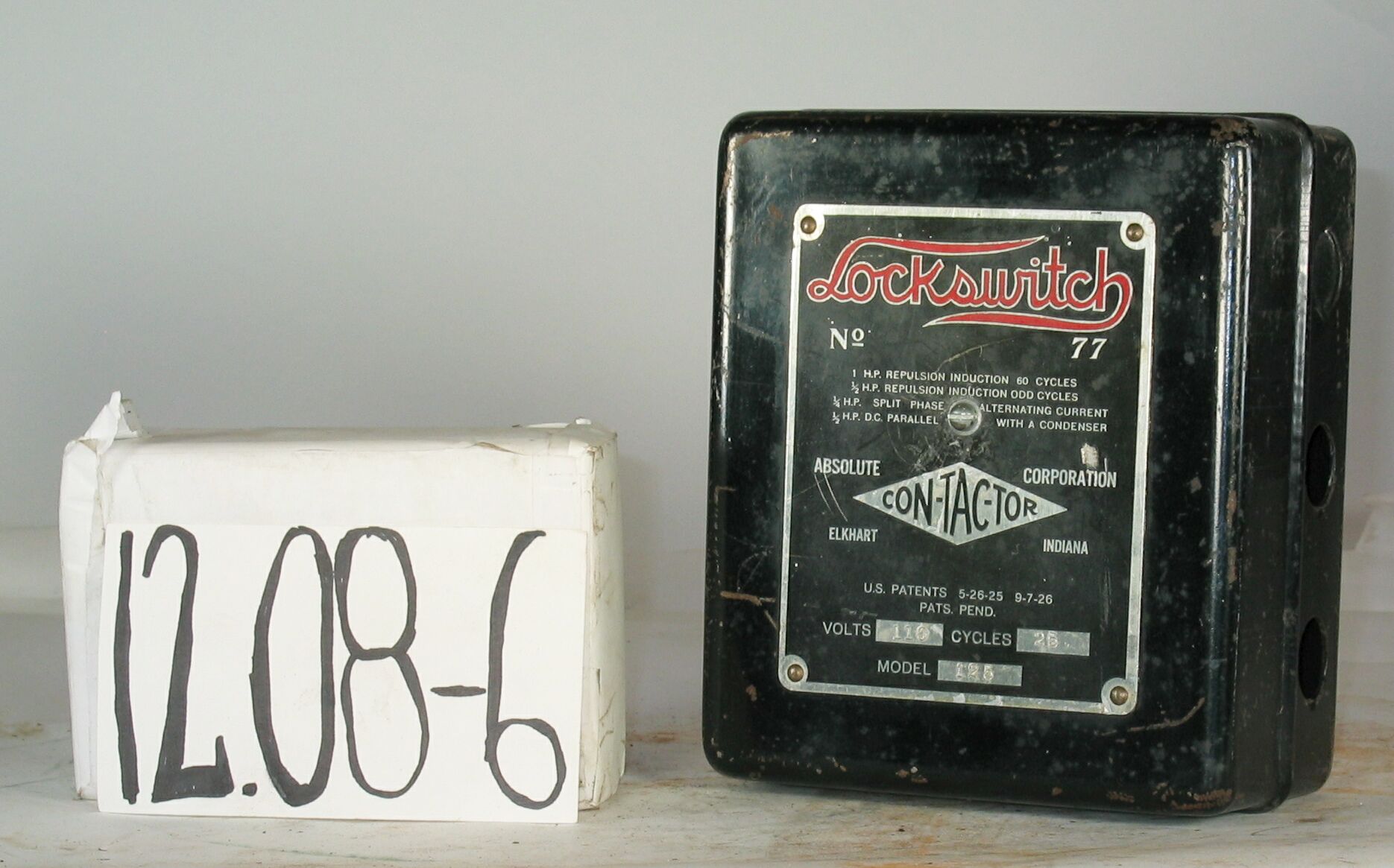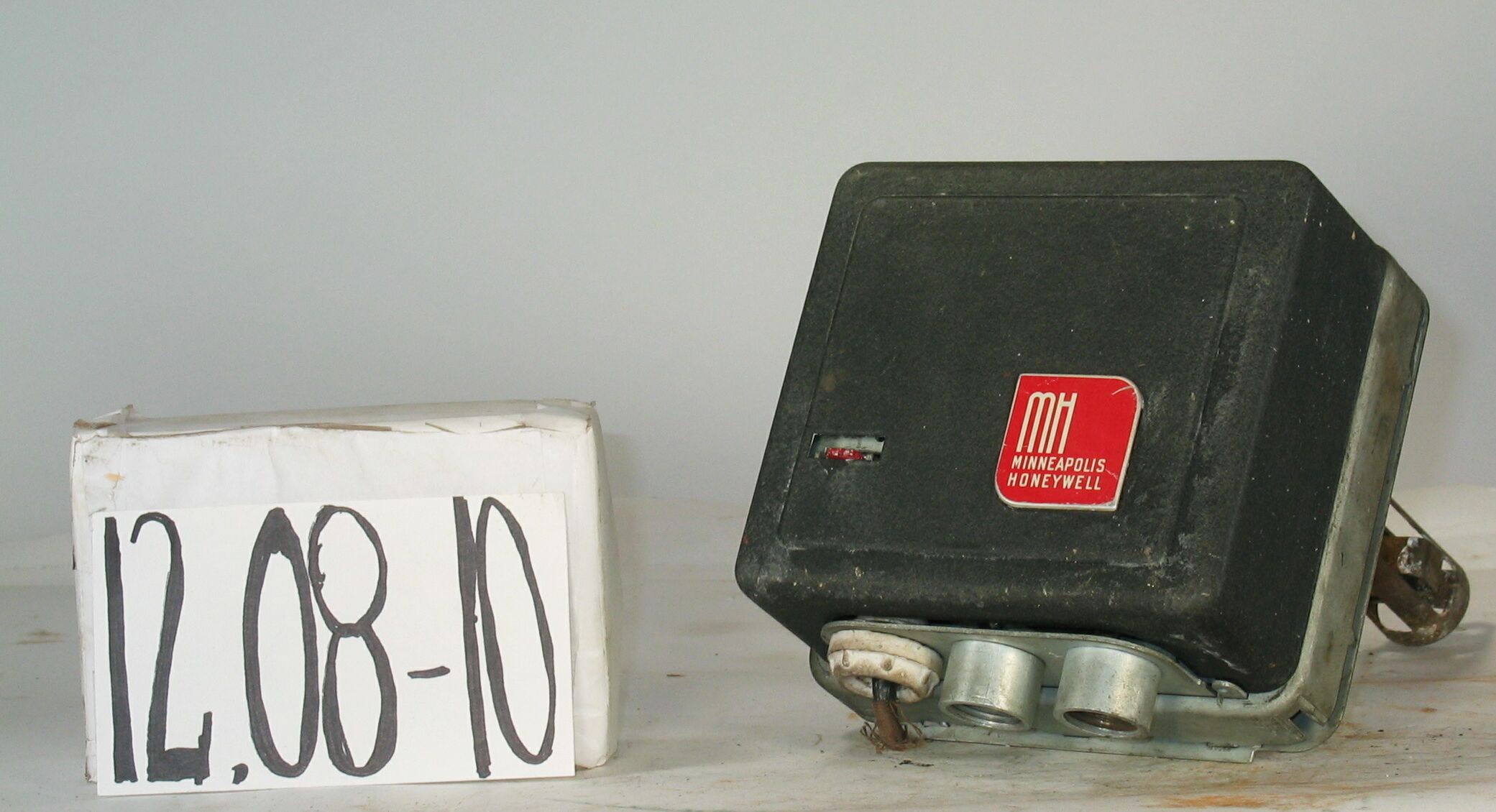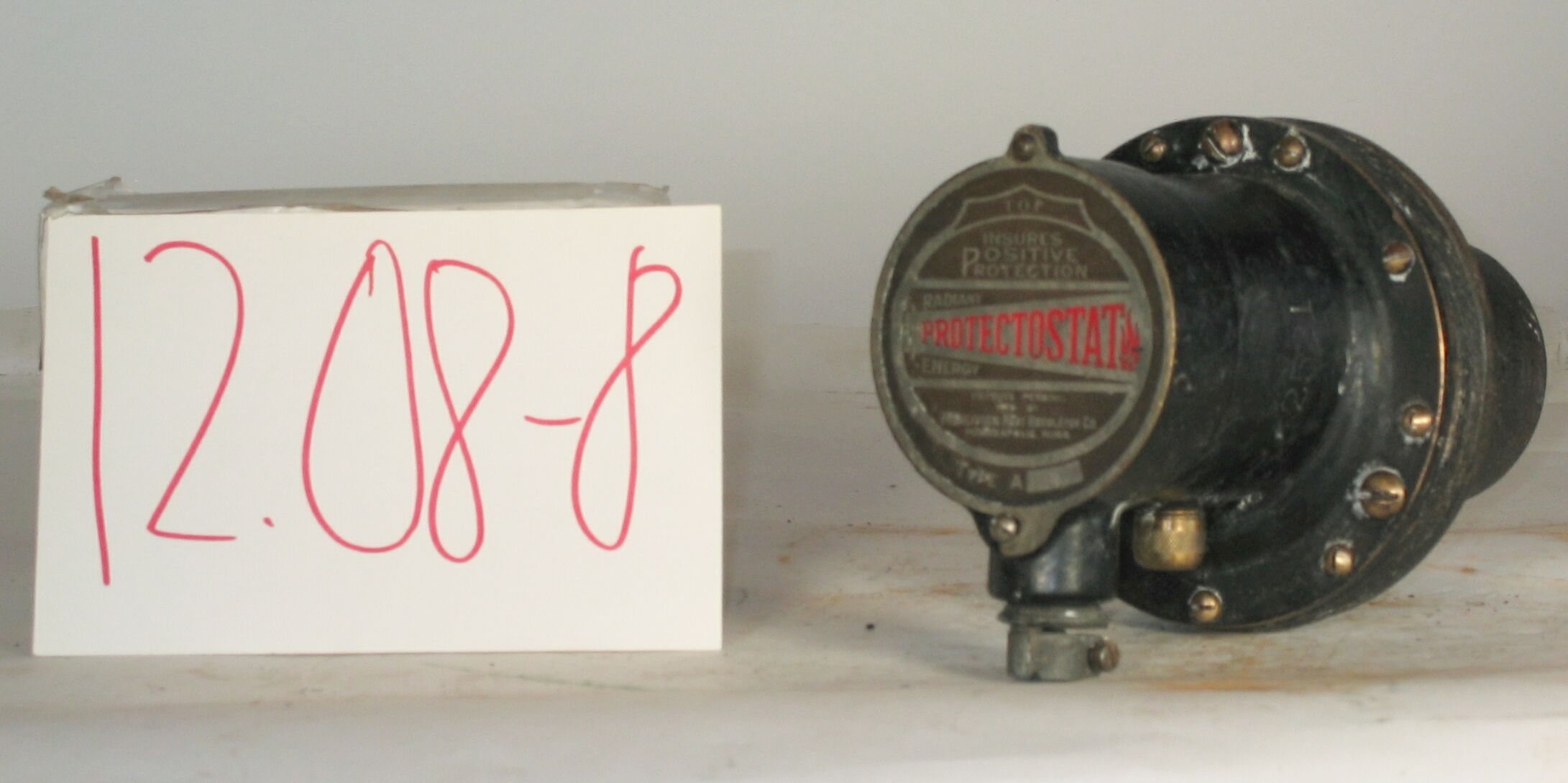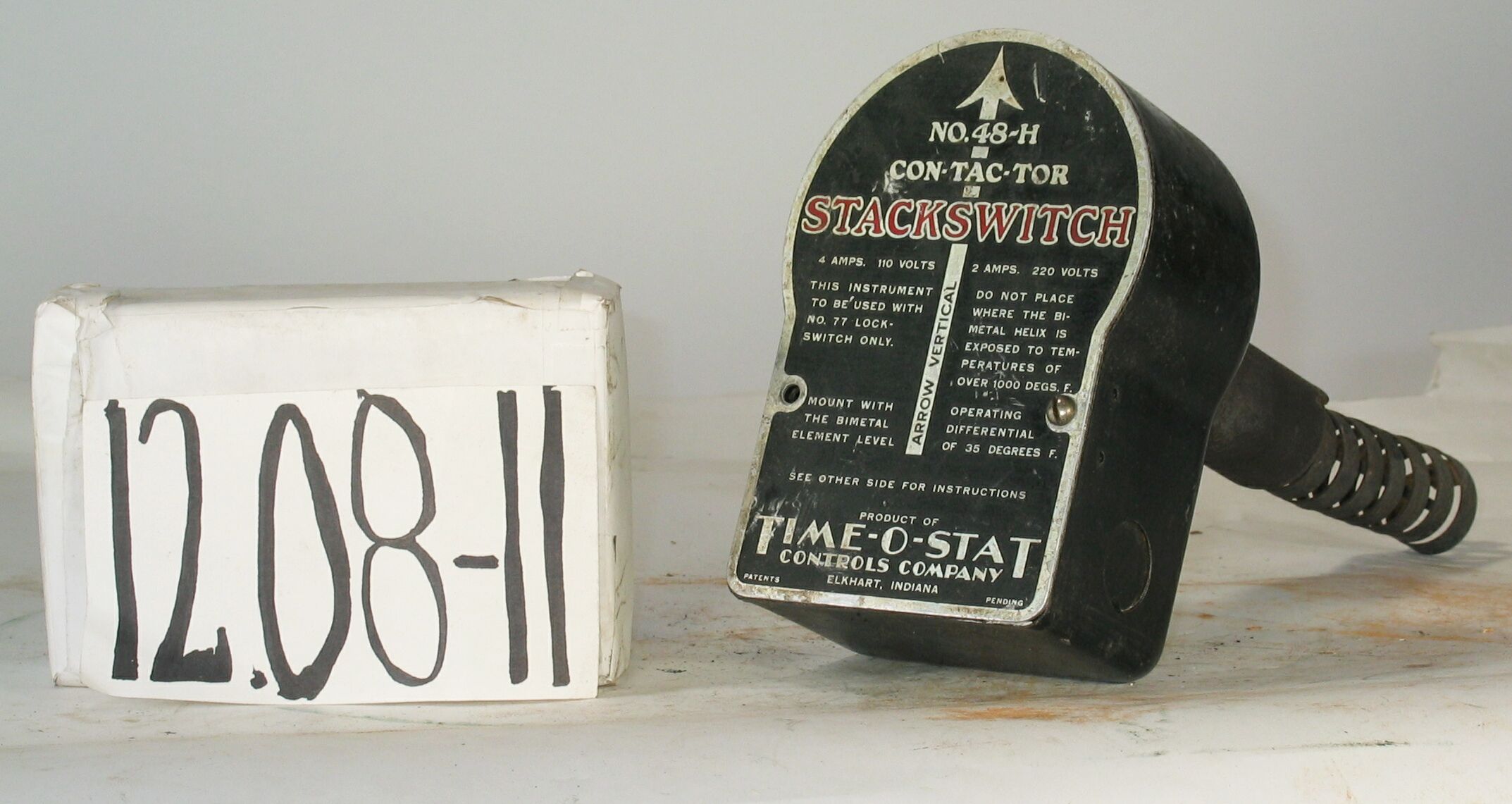12.08-1: Mercoid 1929 Automated Combustion Controller

| HHCC Accession No. 2006.102 | HHCC Classification Code: 12.08-1 |
|---|
Description:
A 1920’s automated combustion controller for Canadian oil fired, home heating systems, with Bourdon tube actuated mercury switch for ‘pressure ignition control’ and ‘Adjustatherm,’ safety cut-out, marketed in Ottawa by Shaver Bros, Type SDP 22, , Mercoid Corp., Circa 1929 [partial assembly only]
Group:
12.08 Pressure Atomizing Oil Burner Equipment and Systems - Fuel Flow and Combustion Controls
Make:
Mercoid
Manufacturer:
Mercoid Corp. Chicago Ill.
Model:
Type SDP22
Serial No.:
S38592
Size:
9 x 3 x 7’ h
Weight:
5 lbs.
Circa:
1929
Rating:
Exhibit, education, and research quality, illustrating the engineering and design of early 20th century combustion controllers for automatic oil heating systems in Canada, a partial assembly
Patent Date/Number:
Patents pending: 1705988 [1929]; 1598874 [1926]; 1648390 [1927]; 1640869 [1927]; 1734015 [1929]; 1658013 [1928]; 1734016 [1929]
Provenance:
From York County (York Region) Ontario, once a rich agricultural hinterlands, attracting early settlement in the last years of the 18th century. Located on the north slopes of the Oak Ridges Moraine, within 20 miles of Toronto, the County would also attract early ex-urban development, to be come a wealthy market place for the emerging household and consumer technologies of the early and mid 20th century.
This artifact was discovered in the 1950’s in the used stock of T. H. Oliver, Refrigeration and Electric Sales and Service, Aurora, Ontario, an early worker in the field of agricultural, industrial and consumer technology.
Type and Design:
Combustion controller with mercury tubeswitching, Bourdon tube actuated ‘pressure ignition control’ ‘Adjustatherm’ safety cut-out’ enclosed in heavy steel case
Construction:
Material:
Special Features:
high style, brass name plate with logo and graphics in red and black Stencilled for Shaver Bros Ottawa
Accessories:
Original system wiring diagram
Capacities:
Performance Characteristics:
Operation:
Control and Regulation:
Targeted Market Segment:
Consumer Acceptance:
Merchandising:
Market Price:
Technological Significance:
Representative of the earliest automatic combustion control technology for oil fired domestic heating systems marketed in Canada, using oil pressure to actuate electric ignition transformer at predetermined set point, and a temperature sensing stack switch, as safety device, in case of flame failure. See schematic diagram. Representative, too, of the earliest complex systems introduced into the Canadian home. See Note #1
Industrial Significance:
Mercoid, a name no doubt derived from the company’s reliance on mercury bulb switching, would prove to be a time honoured one in the HVACR field as it evolved over the 20th century and into the 21st. Current catalogues show similar Bourdon tube driven mercury bulb switching, as used in this 1920’s device [See Dwyer Instruments Web site]
Socio-economic Significance:
The fact that the controller appears with an elaborate multi-coloured name plate with graphic designs and stencilled for Shaver Bros.,Ottawa, is a marker of the rapidly maturing of the market for automatic oil heating in Canada by the late 1920’s. The appeal was to the wealthy and the product was well turned out in an eye appealing, substantial steel enclosure, with smoothly rounded corners to attract the attention of those looking for both quality and style.
Socio-cultural Significance:
With combustion safety devices of increasing sophistication and reliability the public’s confidence and sense of trust in automatic heating equipment would increase rapidly. A new Canadian culture of comfort and convenience had been triggered and was rapidly evolving in much of Canada by the early 1930’s.
Donor:
G. Leslie Oliver, The T. H. Oliver HVACR Collection
HHCC Storage Location:
Tracking:
Bibliographic References:
Cybernetcs and General Systems [Oliver Collection]: Systems Engineering Tools, Harold Chestnut, 1966. Modern Systems Research for the Behavioral Scientist, Walter Buckley, Editor, Aldine, 1968. Systems Behaviour, John Beishon and Geoff Peters, Harper and Row, 1972 Systems Engineering Methods, Harold Chestnut, Wiley, 1977
Notes:
The Introduction of Popular, Complex Systems into the Canadian Home:
The 1920’s saw the introduction of complex mechanical, electric and electronic systems into the Canadian home and the lives of many Canadians, most of them ill prepared. For the first time the public would experience, as an inherent part of their daily life’s routines, the benefits, as well as all too often the vagaries of systems engineering ‘ then in an embryonic state of development. The level of dependence on such systems, with all their inherent imperfections and attendant risks, would be no more apparent than in the field of automatic home heating.
These systems were at once intimidating, awe inspiring, often the source of feelings of personal ineptitude, as well as of fear for reasons of personal and property safety. Included in the early rush to popular technology systems were the automobile, the household radio and automatic home heating. But the most intimidating was, in many ways the latter, immensely obtrusive, in your face, larger than life, and all around you 24 hours a day, bringing with it a degree of dependency that the householder could not afford to forget in the dead of a Canadian winter. All three of these pieces of technology [the automobile, the household radio and the automatic home heating system], have in common an elaboration of interconnected and interdependent parts on which the integrity and performance of the system would be desperately dependent. For the automatic home heating system these components, each with its own unique integrity and operating characteristics, would include, for example: electric motors, flame sensors, solenoid valves, pressure sensors and actuators, electric ignition transformers, heat detecting devices and thermostats. The advent of such increasingly complex, automated systems [mechanical, electric, and electronic] would, in fact, by the late 1940’s lead to a new specialized field of study, known at that time as ‘Cybernetics’, and thence to the larger field of ‘general systems’. The focus was on coming to understand better the properties and performance of complex, inanimate systems, including their degree of purposefulness, self regulation and self direction setting, as well as their ability to communicate meaningful information within the network of which they were a part. For each component of the system must communicate effectively with others for the system to function safely and satisfactorily. System performance, stability, reliability and maintainability, among other criteria, were at stake. All of these criteria were of fundamental importance in the development of automated heating systems for the Canadian homeowner, and the inventors and manufacturers of the day knew it. [See References, General Systems] For their part the manufacturers of these systems, with their myriad component parts and complexities, would learn from the outset the importance of trained service people in communities across the country, wherever such systems would appear. By the 1940’s training courses were increasingly common, as well as control and systems handbooks and systems trouble shooting guides provided by equipment and systems manufacturers.


